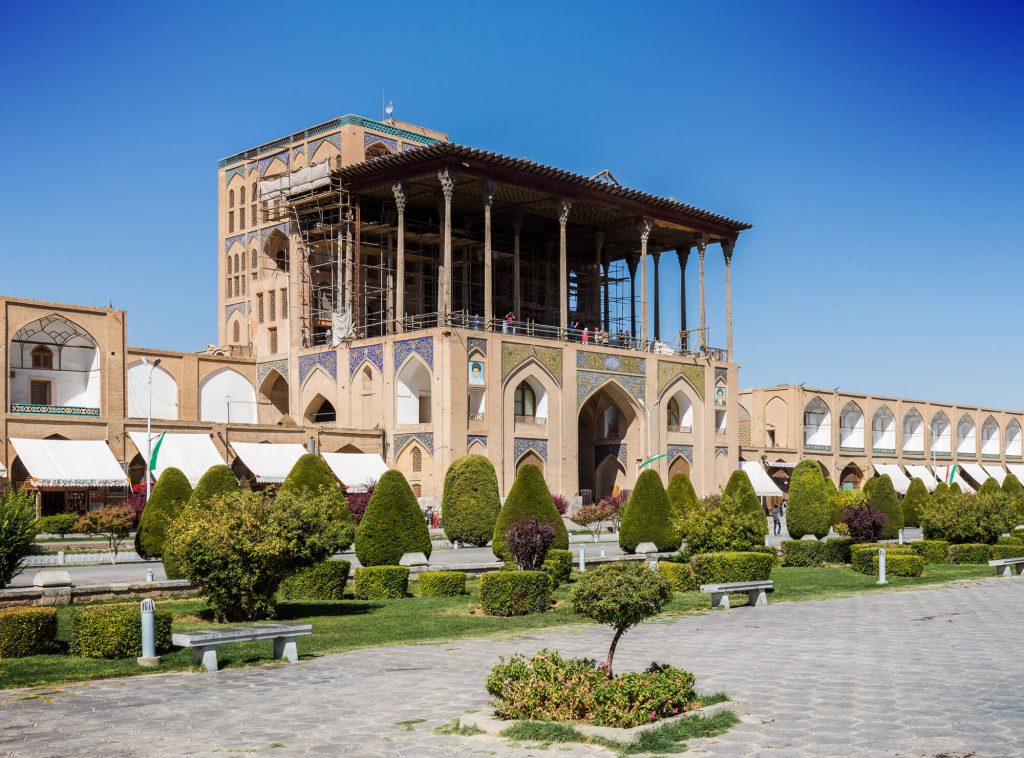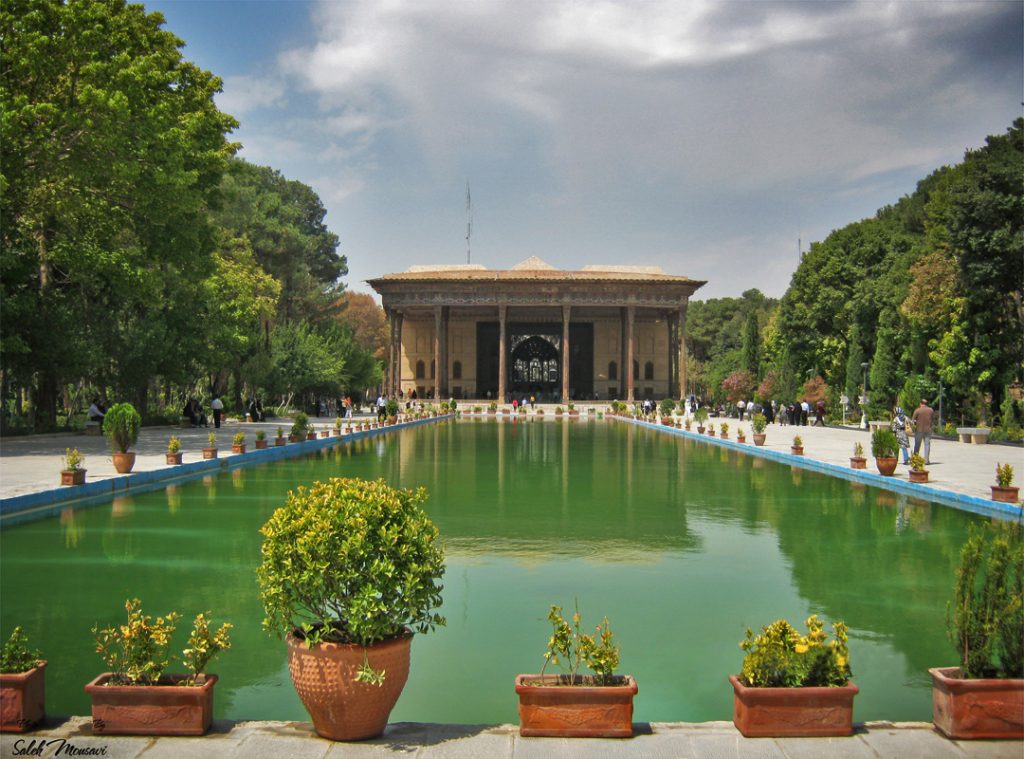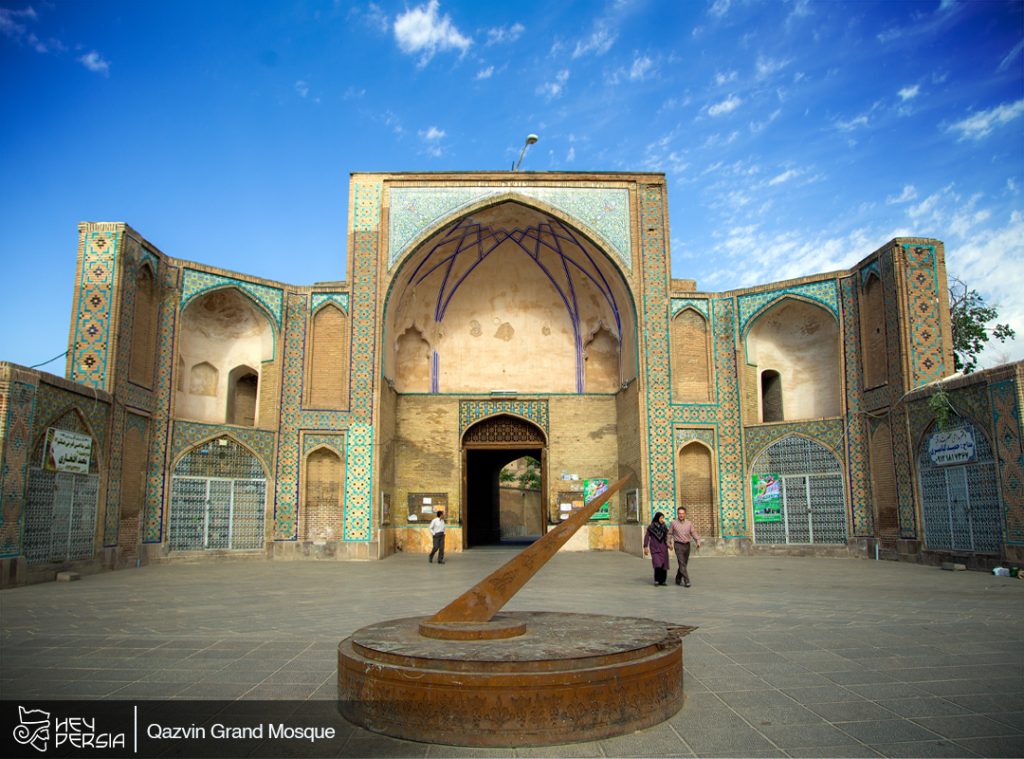Firstly, Before we talk about the Chaghazanbil Ziggurat in Iran Shush, we must first know, what is a ziggurat? Ziggurats are adobe structures with bricks that were like stairs and brought people closer to God. The position of ziggurats was such that their four corners were in the four main directions and they were often as 3, 5 or 7 multi-story buildings with a maximum height of 100 meters and each floor in different colors. Their first floor was in black color and the highest floor was in gold color. The materials used in the construction of ziggurats were among the best materials.
Chaghazanbil Ziggurat in Iran
The largest intact ziggurat in the world is the Cheghazanbil ziggurat, which is located 42 km from the city of Shush.
What do you know about Chaghazanbil Ziggurat in Iran?
Chaghazanbil Ziggurat or Chaghazanbil Temple is the first religious monument of Iran, which was as the first historical monument of Iran in UNESCO in 1979. Ziggurat of Chaghazanbil was “Ziggurat Duravantash” by the Elamites. This 100-hectare building with dimensions of 105 x 105 meters in 5 floors was by order of “Untash Gal”, the great king of Elam. Today, unfortunately, only 2.5 floors of it remain.
His purpose in building the temple of Chaghazanbil in the form of a pyramid was to praise the god “Inshushinak”, the guardian god of the ancient city of Shush, and “Napirisha”, the god of man and patron of the emperor. There are temples for other goddesses in this complex, and it seems that many other temples were to build, but the rulers did not continue building them after Untash Gal. Unfortunately, the ziggurat of Chaghazanbil destroyed in 640 BC by the order of Ashur Anipal, the king of Assyria in the war with the Elamites.

Where is Chughazanbil? What is the access route to Chaghazanbil Temple?
Generally, Chaghazanbil Ziggurat is one of the famous places of Shush in Khuzestan province, which is located 42 km from Shush and 45 km from Shushtar, near Haft Tepe historical area. The distance between Chaghazanbil and Ahvaz is about 120 kilometers. To go to Chaghazanbil temple, you need to travel from Shush-Ahvaz road. In addition, from Shushtar, it is enough to move towards Kasht and Sanat Kazoran road to reach Chaghazanbil.
Architecture of Chaghazanbil Ziggurat
In 1250 BC, Untash Gall decided to build a religious city near the river Dez and the city of Shush. This city was to worship the 2 gods that we mentioned in the previous parts. Various religious ceremonies were in this city every year and pilgrims also welcomed. Some people also lived in this city permanently. Moreover, This city had 7 gates and 3 fences that were inside each other and protected the city from enemy attacks. In the distance between each fence and the previous and next, there were various palaces, buildings and temples. The neighborhoods that were from these 3 fences are: Shahi neighborhood and Temnos neighborhood or sacred area
Since the Assyrian people built their temples in the form of a pyramid, the ziggurat of Chaghazanbil was also built in the form of a pyramid with a square base, 105 meters long. Each floor of the Chaghazanbil ziggurat was smaller compared to the previous floor and finally ended in a room known as the “Supreme Temple” on the fifth floor. The Supreme Temple or “Kukunum” belonged to Napirisha and only a few priests and dignitaries could enter it. Today, there is nothing left of Kukunum and only a few studs and glazed bricks are available. The height of Chaghazanbil ziggurat was initially estimated to be 52 meters, but today, unfortunately, only 25 meters of it with 2.5 floors remain.

Anti-earthquake and flood engineering building
One of the distinctive features of the Cheghazanbil Susa ziggurat is its materials. Although the materials of Chaghazanbil ziggurat are all natural and made of materials such as bitumen, plaster, stone and wood, its strength and resistance is much higher than today’s buildings. This issue can be considered as one of the secrets of the Chaghazanbil Ziggurat temple building. On the other hand, this building is located next to the Dez River, and the possibility of flooding and the risk of river flooding and floods are among its obvious issues.
Of course, the waterways of this building have not yet been fully discovered and archaeologists believe that there was a professional canalization system in this city that protected it from the danger of river flooding. Raw clay, baked clay or brick, glazed brick and glass rods and metals such as gold, bronze and bitumen are used in making Chaghazanbil.
Construction of water structures and treatment plant in Chaghaznibel
Chaghazanbil ziggurat also has gutters so that the building is not damaged by rain. Gutters were located on the walls of the first floor on 4 sides and collected surface water and transferred it to another place. In addition to these gutters, there are other gutters on the second floor that connect the water collected in the stairs and doors to the waterway of the first floor.
These gutters were insulated with bitumen and plaster. Even in some parts, to prevent the water from falling vertically, it was designed as a staircase. Another characteristic feature of Chaghazanbil ziggurat architecture is their purification system. This system has purified the collected water and directed it to the ponds in the city through small channels.
The use of glass in the decoration of Chaghazanbil temple
Chaghazanbil ziggurat has many distinctive features that show the ability and high knowledge of the Elamites. One of the things that can be openly about and admired is the use of raw materials and the production of glass objects.
Design of observatory in Chaghazanbil Ziggurat
In Chaghazanbil Temple, there are 3 small brick buildings, which have different theories about their usage. “Roman Grishman” and “Andre Paro” believe that these brick buildings were actually the base of the statue. Others considered them as platforms, benches or altars. Of course, some others say that these circular brick buildings were speech platforms.
Archaeologists believe that these circular shaped buildings were of any use, they formed a single complex and at first they were as a solar observatory or a solar calendar, but after a while they were also as a decorative device at the entrance gates of the buildings. .

What does Chaghazanbil Ziggurat mean?
Chaghazanbil is of two Lori words “chagha” which means hill and “zanbil” which means basket, and since this building was on a big hill and in the shape of an upside down basket, it became known as Chaghazanbil. The original name of Chaghazanbil is “Al Untash” in Elamite language and “Dur Untash” in Akkadian language. Since this temple was by the order of Untash Gall, it was El Untash, which means the city or castle belonging to Untash.
What is written on the inscriptions of Chaghazanbil?
In the ziggurat of Cheghazanbil, Shush, various inscriptions and brick writings discovered, which were very effective in introducing this huge building. These writings, partly as inscriptions, were on the ziggurat of Chaghazanbil and another part were on objects.
Brick written with the name of Untash Gal
So far, 6,500 pieces of inscribed bricks have been found in the Chaghazanbil ziggurat of Shush, on all of which the name Untash Gal can be there.
Accommodations near Chaghazanbil Ziggurat in Iran
There are no amenities or even accommodation near Chaghazanbil Ziggurat. There are several inns on the road that leads to this precious artifact. But if you are looking for a better quality hotel or tourism, you can travel to Shush or Shushtar.
The best time to visit Chaghazanbil
Considering the geographical location of this building, which is located in Khuzestan province and near the city of Shush, the best time to visit it is in autumn, winter and early spring.
Sightseeing places near Chaghazanbil
One of the places to see near Chaghazanbil is Haft Tapeh and Chaghazanbil Museum. In addition, the museum of “Khamat” village is also near this area. In this village, you can sit for an hour in the “Mazif” reception room of the Arab-speaking compatriots, which is of straw, and drink a delicious Arabic coffee.
Some common questions about Chaghazanbil Ziggurat
In this section, we will address some common questions that may concern you when visiting this area:
The ziggurat of Chaghazanbil belongs to which civilization?
The ziggurat of Chaghazanbil Susa belongs to the Elamite civilization.
In which province is Cheghazanbil temple?
Chaghazanbil is in 42 km from Shush city in Khuzestan province.
How many floors is Cheghazanbil Ziggurat?
Cheghazanbil ziggurat had 5 floors, 2.5 of which have been destroyed.
What are the things inside the ziggurat of Chaghazanbil?
Chaghazanbil is an ancient and religious Elamite city where there is a main temple, palaces, various temples, tombs, etc.
What hours of the day does the Chaghazanbil temple operate?
This temple is open in the first six months of the year from 8:30 to 19:30 and in the second six months of the year from 8:30 to 17:00.
Does Chaghazanbil have a parking lot?
Yes, this complex has a private parking lot. Generally, If you plan to travel to this green and beautiful region, just join us at Hey Persia Travel Agency.





